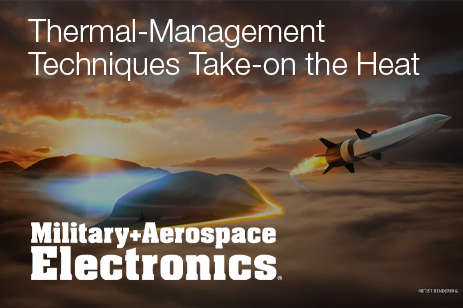
Published in Military & Aerospace Electronics
Written by John Keller
One stubborn constant of nearly every electronics design is the biproduct of heat. It's nearly impossible to use power efficiently enough to eliminate waste heat altogether. Enhancing efficiency can help reduce waste heat -- but only to a degree.
Today's new generations of powerful general-purpose processors, general-purpose graphics processing units (GPGPUs), field-programmable gate arrays (FPGAs), and other components notorious for heat generation make the challenge of removing excess heat from electronics more dire and urgent with each passing year.
Neglecting heat removal in electronics can have consequences ranging from reduced processor performance to outright system failure if internal components start to burn or melt. In fact, we've seen predictions that electronics cooling and thermal management challenges have the potential to bring Moore's Law to a screeching halt. Moore's law is the observation that the number of transistors in a dense integrated circuit doubles about every two years.
As a result, systems designers have devised several new proprietary and industry-standard approaches for dealing with growing levels of electronics heat.